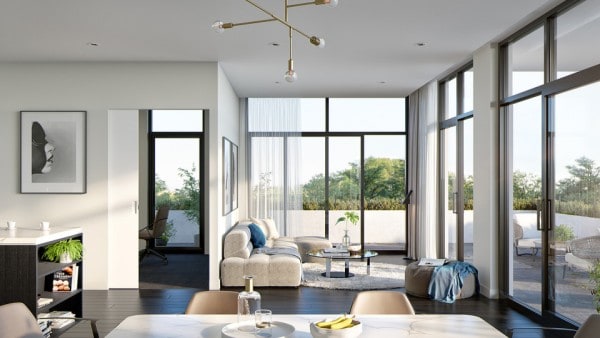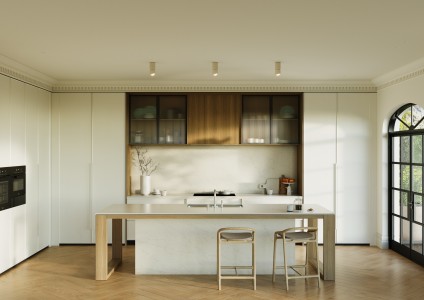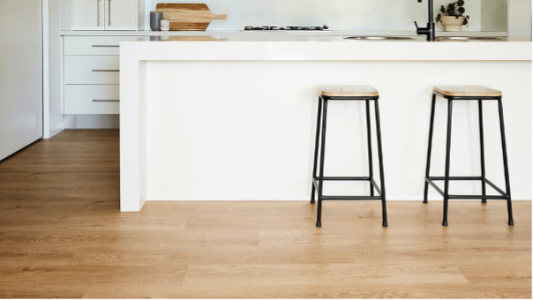Creating an Inside-Outside Connection
Creating an Inside-Outside Connection
Story supplied by Maine Architecture
The inside-outside effect is particularly relevant in Australia with our large blocks and a great climate. As houses get bigger and blocks get smaller, however, it is becoming even more important. The need to be efficient with your space is crucial and can potentially to add value to your home.
“An effective indoor-outdoor connection can make an internal space feel more generous. This can also work in reverse by making a small outdoor area or courtyard feel larger.” - Kris Mainstone, Director, Maine Architecture.
One of the key ideas to appreciate is the concept of borrowed space. This idea is that you can use one space to enhance another. Specifically, a small room can use an outdoor space to feel larger. This is can be described as removing the fourth wall and can make both your living and outdoor areas feel much more generous than their physical dimensions.
Linking indoor and outdoor spaces is the objective but what are the best techniques for achieving this?
Making the glass as large and transparent as possible is the first step. Large panels of glass can be expensive but when used strategically, they're worth it. Window frames that are as thin as possible are important. Perimeter frames can be recessed into the walls and floor so they effectively disappear. Roller blinds can block important glass, so ideally these are recessed into the ceiling; curtains rods and fixings can create visual clutter and should also be recessed.
Continuing the surfaces of the room outside helps the eye pass through the glass line and out. These surfaces include the ceiling, floor and two walls. These should maintain the same line as much as possible, to maximize flow. For floors, keep the material as similar as possible. Sometimes it may not be possible to use an indoor floor material externally, in such instances try to keep to the same family of materials. For example a timber floor may continue as a deck, polished concrete can become honed concrete etc.
For evening use, lighting can be another useful element for linking external spaces. Consider repeating lights seamlessly from inside to out. These can be ceiling, wall or even floor lights. Matching the lighting ambience levels of both spaces also reduces the reflectance of the glass to further enhance the link.
Finally, keeping objects, furnishings and aspects of the material palette consistent will help make the outdoors feel like a natural extension. Consider extending elements like a kitchen bench or a bench seat from inside to out. Similarly, a planter can extend from the outside in.
“Consider both spaces as if they were the same room, and design them together as if they were one. This will create a harmony between the two spaces making them feel naturally connected.” - Kris Mainstone, Director, Maine Architecture.
Ultimately, a well designed inside-outside connection can create an effect of spaciousness that can greatly improve your living experience and the value of your home. While it can add expense and be difficult to achieve the payoff is usually worth it.



